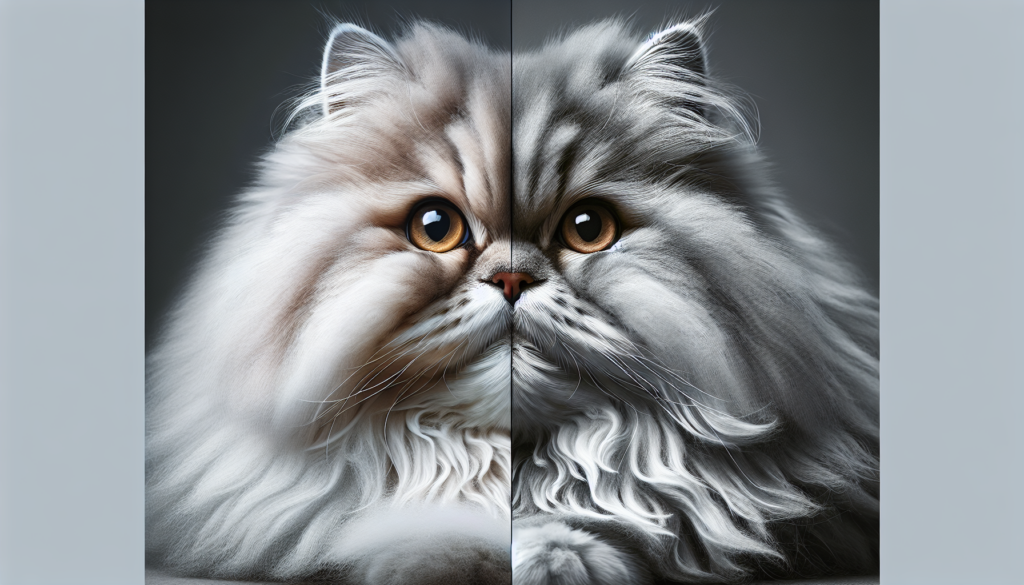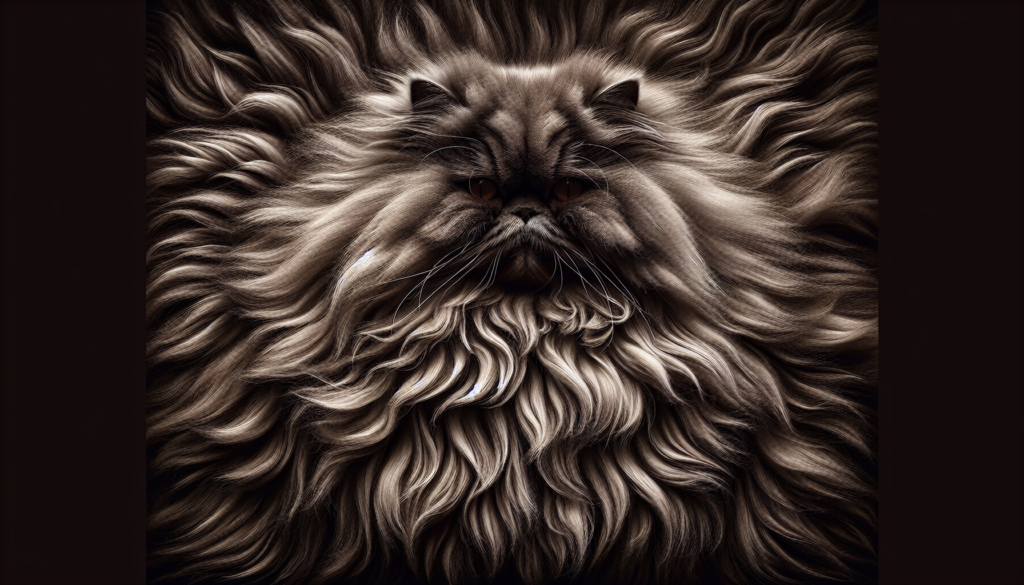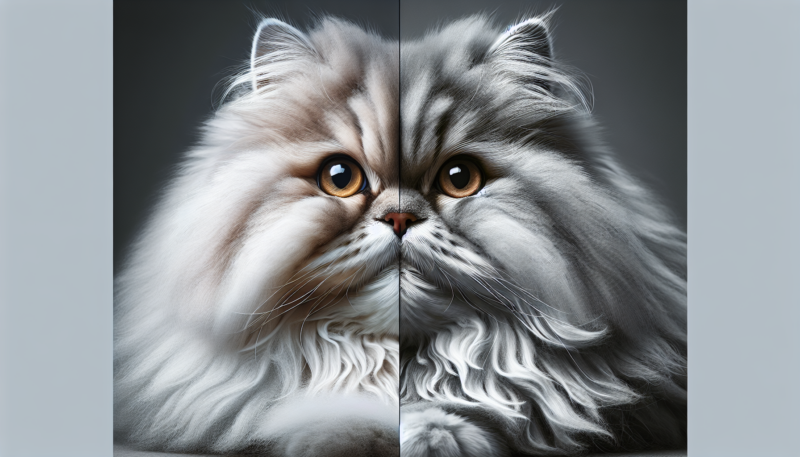Have you ever wondered at what point in their lives Persians cats morph into their iconic fluffiness? Well, wonder no more! In this article, we will uncover the secret behind the enchanting transformation of Persians into the fluffy bundles of fur that we all know and love. From their early days as tiny, sleek kittens to the moment their beautiful, luscious coats reach their peak fluffiness, we’ll delve into the stages of the Persians’ fluffy journey. So, get ready to explore the captivating world of when Persians get fluffy!
Factors that Contribute to Persian Cats Getting Fluffy
Persian cats are known for their beautiful and luxurious coats, which are often described as being fluffy. There are several factors that contribute to the fluffiness of Persian cats, including genetics, age, season, and grooming practices.
Genetics
Genetics play a significant role in determining the characteristics of a Persian cat’s coat. The coat of a Persian cat is determined by a combination of inherited traits. These traits can include the length, texture, and overall fluffiness of the coat. Some Persian cats are genetically predisposed to having a more fluffy coat, while others may have a smoother or less dense coat.
Breeding practices also play a role in the genetics of Persian cats. Breeders often select cats with desirable coat characteristics to mate, which can help to produce kittens that have a fluffier coat. Additionally, the distinction between purebred and mixed breed Persian cats can influence the fluffiness of their coats. Purebred Persian cats often have a more consistent appearance, including a fluffier coat, compared to mixed breed Persians.

Age
The age of a Persian cat can also affect the fluffiness of its coat. Kittenhood is often a time when a Persian cat’s coat starts to become fluffier. As they grow and develop, their coat becomes denser and more voluminous. By the time a Persian cat reaches adulthood, typically around one to two years of age, their coat is generally at its fluffiest. The maturation process of a Persian cat’s coat is gradual, starting from their kittenhood and progressing as they age.
Season
The time of year or season can impact a Persian cat’s coat and its fluffiness. During the winter months, Persian cats grow a thicker and denser coat as a mechanism to keep warm in colder temperatures. This winter coat growth leads to increased fluffiness. As spring approaches, Persian cats begin to shed their winter coat, which can result in a temporary decrease in fluffiness. In the summer and fall, Persian cats may experience changes in their coat texture and thickness, depending on the climate and environmental factors.

Grooming Techniques for Fluffy Persian Coats
Regular and proper grooming practices are essential for maintaining the fluffiness of a Persian cat’s coat. Grooming helps to remove loose fur, prevent tangles, and keep the coat clean and healthy. Here are some grooming techniques that can contribute to a fluffy Persian coat:
Daily Brushing
Brushing your Persian cat’s coat on a daily basis is crucial for maintaining its fluffiness. Use a comb or brush specifically designed for long-haired cats to remove tangles and prevent mats. Regular brushing also helps distribute the natural oils in the coat, giving it a healthy and shiny appearance.
Bathing and Drying
Occasional bathing is necessary to keep a Persian cat’s coat clean and free from dirt and debris. Use a gentle cat shampoo and thoroughly rinse the coat to avoid any residue. After bathing, it is important to dry the cat’s coat completely to prevent matting. Use a blow dryer on a low heat setting or consider using a towel or pet-safe drying mat.
Professional Grooming
For some Persian cat owners, professional grooming services may be beneficial in maintaining a fluffy coat. Professional groomers have the expertise and tools to properly groom long-haired cats, including Persians. They can provide thorough grooming sessions that include brushing, bathing, trimming, and even styling if desired.
Potential Challenges with Maintaining a Fluffy Coat
While a fluffy Persian cat’s coat is undoubtedly beautiful, it can present some challenges in terms of maintenance. Here are some common challenges that owners may face when trying to keep their Persian cat’s coat fluffy:
Tangles and Mats
The dense and long coat of a Persian cat is prone to tangles and mats. These can be especially troublesome if not addressed promptly, as they can lead to discomfort and potential skin issues. Regular brushing and combing can help prevent tangles and mats from forming, but sometimes professional grooming or the assistance of a veterinarian may be necessary to remove stubborn mats.
Excessive Shedding
Despite their reputation for having luxurious coats, Persian cats are not immune to shedding. Like all felines, they go through natural shedding cycles. Although shedding can be a bit more noticeable with Persians due to their longer fur, regular brushing can help minimize the amount of loose hair in the environment. However, it is essential to monitor excessive shedding, as it could be a sign of an underlying health issue and may require veterinary attention.
Allergies and Skin Conditions
Persian cats can be more prone to allergies and skin conditions due to the length and density of their coat. Allergens, such as pollen or certain types of food, can irritate their skin and cause discomfort. In some cases, allergies can contribute to coat and skin problems, leading to a decrease in fluffiness. Regular veterinary care, including allergy testing if necessary, is vital for managing these conditions and ensuring the health of a Persian cat’s coat.
Tips for Keeping Your Persian Cat Fluffy
Maintaining a fluffy coat for your Persian cat requires consistent care and attention. Here are some tips to help you keep your Persian cat’s coat fluffy:
Regular Brushing and Combing
As mentioned earlier, daily brushing and combing are essential. Make it part of your routine to spend quality time grooming your Persian cat. This not only keeps their coat fluffy but also helps to strengthen the bond between you and your furry companion.
Proper Nutrition
Providing a balanced and nutritious diet plays a significant role in the overall health of a Persian cat’s coat. Opt for high-quality cat food that includes essential fatty acids, such as omega-3 and omega-6, which support healthy skin and coat. Consult with your veterinarian to determine the best diet for your Persian cat’s needs.
Routine Veterinary Care
Regular visits to the veterinarian are essential for maintaining your Persian cat’s health and, consequently, the fluffiness of their coat. Schedule routine check-ups, vaccinations, and preventive care as recommended by your veterinarian. They can also provide guidance on grooming techniques, nutrition, and any specific needs your Persian cat may have.
Benefits of a Fluffy Persian Coat
Having a fluffy coat provides several advantages for Persian cats, beyond just being aesthetically pleasing. Here are some benefits of a fluffy Persian coat:
Aesthetics and Beauty
The luxurious and fluffy coat of a Persian cat is undoubtedly a sight to behold. It adds to their overall appearance and is often admired by cat lovers and enthusiasts alike. The fluffiness of their coat contributes to their charm and elegance.
Softness and Comfort
A fluffy Persian coat is incredibly soft, making them a joy to touch and cuddle. Their fur provides a comfortable and cozy experience, both for the cat themselves and for those lucky enough to share their space.
Insulation and Protection
The density of a Persian cat’s fluffy coat provides insulation against cold temperatures, helping to keep them warm during colder seasons. Additionally, the length and fluffiness of their coat can provide some protection against minor scratches or abrasions, adding a layer of defense.
Cultural Significance of Fluffy Persian Cats
Fluffy Persian cats have not only become beloved pets but have also achieved cultural significance and recognition. Here are some aspects of their cultural significance:
Historical Symbolism
Persian cats have a long and illustrious history, dating back thousands of years. They were known to be treasured companions of royalty, and their beauty and elegance were revered. Their fluffy coats were often associated with wealth and luxury.
Popular Culture References
Fluffy Persian cats have also made their way into popular culture. They have been featured in movies, television shows, and various forms of media. Their distinct appearance and fluffy coats make them instantly recognizable.
Breed Standards and Competitions
In the world of cat shows and competitions, breed standards are set to determine the ideal characteristics for each breed. Fluffiness and coat quality are among the criteria used to judge Persian cats. These competitions celebrate the unique features of Persian cats, including their beautiful and fluffy coats.
Conclusion
The factors that contribute to Persian cats getting fluffy are diverse and interrelated. Genetics, age, season, and grooming practices all play an important role in the fluffiness and overall appearance of a Persian cat’s coat. Whether you are a proud owner of a fluffy Persian cat or simply an admirer of their beauty, understanding these factors can deepen your appreciation for these remarkable felines. By providing proper care, grooming, and attention to their needs, you can help your Persian cat maintain its fluffy coat and enjoy all the benefits that come with it.
